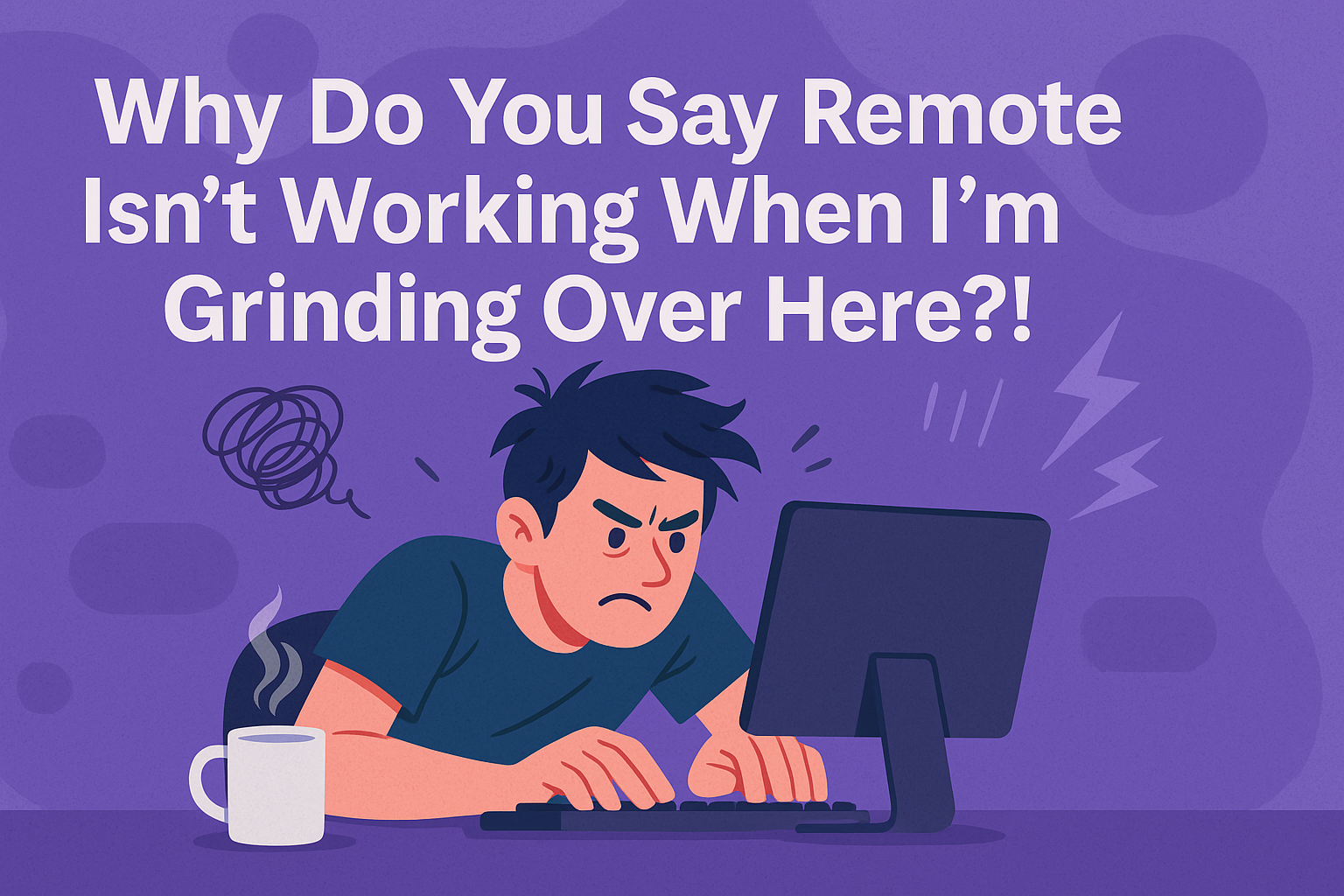

Summary
If you're one of the 57% of people working as hard as ever from home, you're probably sick of hearing why it isn't working out. Unfortunately, you're in the minority and your effort is carrying a surprisingly large number of fake-work-from-home folks, putting the whole enterprise at risk.

Table of contents
Why Do You Say Remote Isn’t Working When I’m Grinding Over Here?!
A tale of two workforces
If you’re grinding at home every day, the headlines about “remote work not working” probably feel insulting. You’re doing full days — sometimes more — and yet you’re being lumped in with a story that says you’re lazy.
The truth is more complicated. The American Time Use Survey (ATUS) doesn’t just show averages — it shows polarization. Some people are doing the work. A lot aren’t. And the imbalance is what’s dragging remote into crisis.
The averages don’t lie
Remote professionals average 7.0 hours of work each weekday. In the office, it’s 8.2 hours — over 16% more. That’s not a rounding error - it’s the equivalent of taking two months extra off every year.
But hidden in those averages are two very different groups:
- Actual WFH: people working >=7.5 hours a day from home, which make up 57.1% of professionals
- Fake WFH: people working less than 3.5 hours a day from home, which make up 14.3% of professionals
So yes — if you’re one of the grinders, you’re not wrong. You’re carrying your weight and then some. But the averages are being dragged down by colleagues who aren’t, and employers have to manage the whole business.
Why this matters for trust
In the office, managers have peripheral vision. They can see who’s busy, who’s struggling, who’s coasting — often without a single meeting. Remote strips that away. Suddenly, things that were once quick checks now take scheduled calls, longer syncs, and more structured updates.
And without that peripheral vision, all that’s left are the averages. When 1 in 6 professionals is hardly working, those averages destroy trust. Employers don’t want to gamble on whether they’ve got a team full of grinders or a team full of ghosters.
Making remote work
Dragging everyone back to the office isn’t the only option. The real fix is clarity. Leaders need evidence to see where effort is real and where it’s slipping. And grinders need fairness — a way to prove their commitment isn’t being drowned out by colleagues phoning it in.
That’s what TeamScore is built for: restoring trust by showing what’s actually happening. With visibility, managers can lead better, grinders get the credit they deserve, and the slackers can’t hide.
Remote work doesn’t fail because nobody’s working. It fails because too many aren’t. Let’s fix that imbalance — and prove remote can work.
